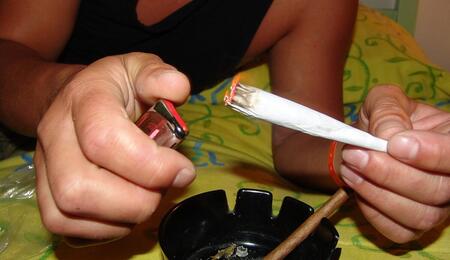To Smoke or Not to Smoke Cannabis?

Joints have been at the heart of Cannabis culture. Everyone remembers the first time they smoked or the first time they rolled by themselves. Those many times hiding a spliff from a parent or trying to mask the smell that stayed in the room as you finish a roach by the window. Hand rolls go decades back when there was no industry and there weren't all the fancy products laced with marijuana we can purchase in dispensaries today. The questions now abound: is it okay to smoke? is it safe to do it? Does it hurt the lung? In this article, we weigh the pros and cons of smoking Cannabis.
What Are the Benefits of Smoking Cannabis?
Getting information about the benefits and risks of smoking can help you determine if smoking is fit for yourself, your health, and your lifestyle. Let's start with the arguments about what makes smoking a great experience.
Quick onset
Smoking marijuana generates an immediate effect on the brain and body. The smoke enters the lungs and goes directly into the bloodstream. THC is detectable in the blood just a few seconds after the first inhale. The cerebral high is felt just a few minutes later and may last for two-three hours. The quick onset of effects is a main reason for joy among recreational users. It's also soothing for medical users who want to experience symptom relief as quickly as possible.
Adrenaline
The rush of blood to the brain and the rest of the body is one of the most cherished feelings from smoking. The euphoria a joint can bring is sometimes incomparable with the effects of other methods of consumption.
Sensory experience
A lot of strains release captivating smells as they burn. Terpenes are what give Cannabis its aromatic quality and appeal. For a lot of users, this is an irreplaceable part of the experience that no other product or route of delivery can substitute for.
Bioavailability
Bioavailability is the amount of an active ingredient that is absorbed into the body. Smoking allows for as much as 56% bioavailability. In comparison, orally ingested THC ranges between 10 and 20%.
Control over how much you consume
Cannabis strains vary in THC strength as well as that people have different tolerance levels. Almost everyone has regretted edibles at some point. Not knowing how much exactly you take may come with a bad outcome. But this is less of a problem when smoking. Users have ultimate control over how much weed they put in their joints and therefore in their body. You can test and pause from smoking and quickly get the feeling of whether you've had the desired sensations.
There's the social side to it
Whether it's sharing a spliff with an old pal or chatting with a total stranger while passing around, smoking weed can be a great social experience. There's the ease of use and the fact that flower is cheaper than most other products.

What is the Negative Side of Smoking?
Smoking may offer some incredible benefits, however, there are also some downsides.
It affects lung health
It's very well known that smoking will not have a good impact on the respiratory system, especially when it becomes a habit. Smoke from marijuana may contain pretty much the same chemicals as cigarette smoke, including carcinogens, tar, bronchial irritants, and carbon monoxide. The tar accumulated in the roach may retain goopy trichomes from the plant matter, but it also contains significant amounts of carcinogens such as benzanthracene and benzopyrenes.
Cannabis smokers are at a greater risk than tobacco smokers because the smoke is held deeper in the lungs for a duration of effects, and this also happens at a higher temperature with poor filtering. In effect, smoking leads to a threefold increase in inhaled tar with a one-third increase in tar retention in the respiratory tract.
Overall, consistent smoking can be linked with coughing, wheezing, shortness of breath, chest tightness, and phlegm accumulation. It can aggravate conditions such as asthma and chronic bronchitis. It may also lead to more severe illnesses such as COPD, reduced lung function, and lung cancer. Quitting smoking weed may help restore and preserve lung health.
Shorter effect duration
Any effects generated by smoking will dwindle faster than with other delivery methods, which is a downside for users seeking long-term relief. High from smoking may last around two hours on average. With edibles, it's around six hours on average. Studies further indicate that when administered in safe, consistent doses, oral ingestion is more analgesic and less intoxicating than smoking. Local body pains such as back pain or knee pain may be best treated with topical ointments and patches.
Loss of THC
How much you feel the benefits of Cannabis in the body may be determined by smoking styles. When inhaled carelessly, as much as 80% of THC can be lost in side-stream smoke. Inexperienced users are more prone to do this and waste precious weed while smoking.

.jpg)










